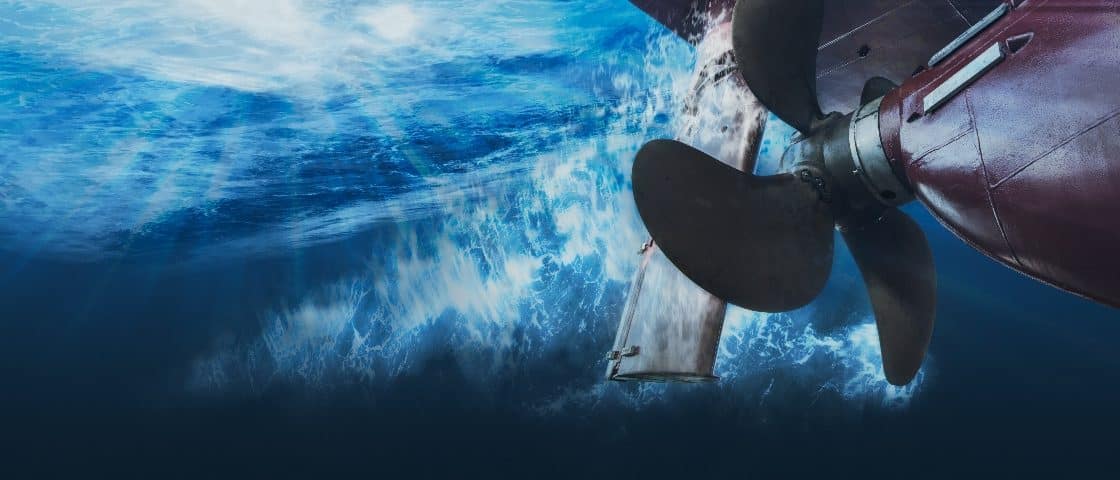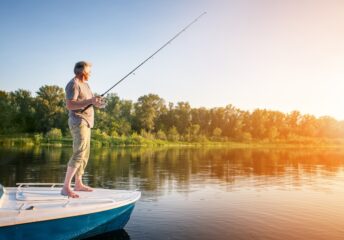Everything You Need to Know: Boat Propeller Types
Last Updated on October 12, 2023 by Boatsetter Team
Most boats are driven by propellers and there are many kinds and sizes. The optimal choice of propeller will depend on boat type, length, weight, use, and engine power. The right propeller will enhance efficiency by lowering drag, provide greater torque for faster planing speeds, and optimize performance at top speeds.
Many props are made of aluminum and are lightweight and affordable. These are good for smaller boats and tighter budgets. Stainless steel propellers are better for larger and high-performance boats due to their strength and durability but they’re more expensive. Bronze propellers are strong, rigid, and corrosion-resistant and are the priciest.
Propellers can have anywhere between two to six blades. Two-bladed props are used with smaller engines. They’re highly efficient but tend to produce vibration and aren’t powerful enough for heavier vessels. Sailboats and trolling motors often use two-bladed propellers. The higher the blade count, the more balanced the prop and the greater the thrust but also the greater the drag. Large five and six-bladed propellers are usually used with commercial boats, large yachts and ships.
Let’s go beyond materials and blade count and look at the types of propeller.
Post summary:
- Fixed propellers
- Variable pitch propellers
- Folding propellers
- Feathering propellers
- Dual-props
- Surface-piercing propellers
- Specialty propellers
List your boat & start earning an avg. of $20K yearly with Boatsetter
Fixed pitch propellers & controllable pitch propellers
Fixed propellers, commonly referred to as fixed-pitch props, are a fundamental part of a boat’s propulsion system. These propellers have blades with a set angle that cannot be adjusted while the boat is running. Most props are fixed and have a constant blade angle. They’re easy to install and repair and are less expensive than others below.
On the other hand you have controllable Pitch Propeller’s (CPP), these props are characterized by an adjustable angle. The pitch can be manipulated while the boat is in motion to optimize performance while running at different speeds. They can be more difficult to service and are expensive to purchase and install.
Folding propellers
Folding propellers are a popular choice among boaters looking for enhanced performance and maneuverability, which makes it perfect for sailing. Under sail, you will want to reduce drag as much as possible so they often opt for a folding prop where the blades fold back against the hub when not motoring.
Pro tip: Folding props allow for improved sailing speed and efficiency when the engine is not engaged.
Feathering propellers
Another way to reduce drag for sailboats is to use a feathering prop. If you’re using feathering propellers, the blades don’t fold but rather angle or rotate the blades to minimize the surface area presented to the water flow when the boat is under sail.
Dual-props
Dual props look as if there are two props in one. These counter-rotating props have several advantages including improved thrust, faster acceleration, better stability and handling even in reverse, and increased efficiency for better fuel economy.
They can be used on smaller boats with outboards or larger boats with stern drives or inboard engines. They can be expensive. Mercury, Suzuki and Volvo offer dual prop solutions.
Surface-piercing propellers
Designed to run partially out of the water (Surface Drive System), these props are often used with high-performance or racing powerboats because they decrease drag through the water. Boaters who crave maximum velocity and agility often opt for surface-piercing propellers, but they may require expert installation and maintenance to ensure safe and effective performance.
Toroid propeller
A new design has been introduced by Sharrow Marine where the prop blades are actually loops rather than flat blades. The purpose is to reduce vibration and increase speed at a given RPM.
Now, for the exception–locomotion through the water can also be achieved via a jet drive that uses forced water rather than a propeller to drive a boat. Jet boats can be small or large and the benefit of jet drives is that they can usually be taken into shallower waters than prop-driven craft.
Knowing which boat propeller is best
The wrong prop can create uncomfortable vibration, limit top speeds regardless of engine RPMs, create sluggish acceleration, and cause cavitation or excessive water aeration.
But, the right propeller will optimize performance including higher top speeds, create a smoother ride, and provide a more fuel-efficient solution. When deciding on a propeller, we recommend seeking a professional to know all your options. In the meanwhile, you can read more about propeller’s right here:
About us
Boatsetter is the go-to app for boat rentals and on-water experiences. Whatever the adventure, we’ve got a boat for that—Set sail, start the party, go yachting, make your trophy catch, and hone your watersports skills! Download the Boatsetter app (App Store | Google Play). Make sure to follow @boatsetter on Instagram, and tag us in all your boat day pictures for the chance to be featured.
List. Rent. Earn—Only at Boatsetter

Zuzana Prochazka is an award-winning freelance journalist and photographer with regular contributions to more than a dozen sailing and powerboating magazines and online publications including Southern Boating, SEA, Latitudes & Attitudes and SAIL. She is SAIL magazines Charter Editor and the Executive Director of Boating Writers International. Zuzana serves as judge for SAIL’s Best Boats awards and for Europe’s Best of Boats in Berlin.
A USCG 100 Ton Master, Zuzana founded and manages a flotilla charter organization called Zescapes that takes guests adventure sailing at destinations worldwide.
Zuzana has lived in Europe, Africa and the United States and has traveled extensively in South America, the islands of the South Pacific and Mexico.










